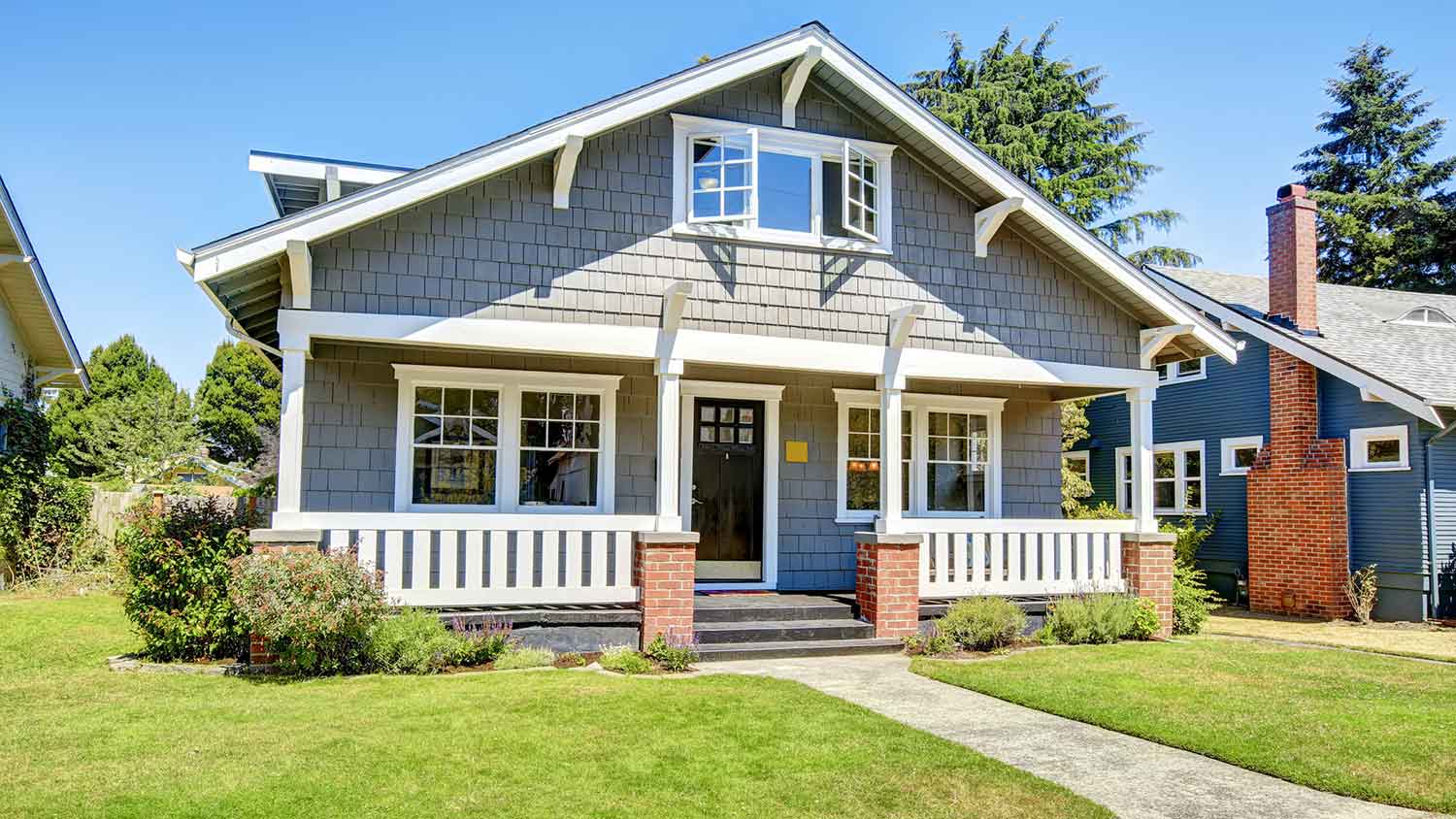
Need to get rid of lingering smoke odors in your home? Learn how much smoke remediation costs to budget accurately for this major undertaking.
Installing a private fire hydrant costs an average of $3,000 to $9,100, depending on location, labor costs, and hydrant type, with most homeowners paying around $6,500.


Dry barrel hydrants used in cold climates range in price from $1,500 to $3,500.
Wet barrel hydrants used in areas without freezing temperatures cost between $1,300 and $2,600.
Higher class hydrants (which pump more water) cost more than lower class hydrants.
Ongoing costs include inspections, insurance, and hydrant maintenance.
This isn’t a doable DIY project, and labor to install a hydrant ranges between $1,000 and $2,000.
Installing a private fire hydrant costs an average of $6,500, although costs can range between $3,000 to $9,100, based on the type and class of hydrant, labor costs, permit fees, and hydrant location. Expect to pay more if excavation or additional plumbing work is required.
Buying and installing a private fire hydrant is a bit more difficult than other fixtures for your property. Sourcing pricing information can be challenging as a result.
Fire hydrants cost an average of $1,000 to $2,500. You may pay more, depending on the classification of the hydrant and whether you’re purchasing a hydrant through a third party or directly.
The type of fire hydrant you install will affect the cost. In colder climates, where the water supply needs to be below the frost line, you’ll need a dry barrel hydrant, which leaves no water above ground after the hydrant has been used.
Dry barrel hydrants cost an average of $1,500 to $3,500. Warmer areas commonly use wet barrel hydrants, which leave water in the hydrant after use since there’s no danger of damage from freezing temperatures. A wet barrel hydrant costs around $1,300 to $2,600.
The labor costs for the installation of a private fire hydrant and its connection to the existing water supply average between $1,000 and $2,000. Labor costs may rise with site conditions and the need for extra work to secure the hydrant’s connection to the water supply.
In addition to materials and labor, you may also pay more depending on the location where you want the hydrant installed. If the location requires breaking up an existing walkway or sidewalk, replacing that material can add $2,000 or more to the final cost. Similarly, if you need further plumbing work, such as replacing your water main line to establish a connection with the hydrant, your total price will increase.
Before installing a fire hydrant on your property, you’ll need to obtain a permit from your municipality. Permit fees vary by location, but expect to pay anywhere between $50 and $500 for a permit.
The cost of installing a private fire hydrant on your property may vary based on the classification of the fire hydrant you choose, how far from the property’s buildings the hydrant is to be located, and how much work is required to connect the hydrant to the water supply.
Fire hydrants are classified (and color-coded) according to their flow rate (or the amount of water they can handle) by the National Fire Protection Association’s Code NFPA 291. The flow rate is usually measured in gallons per minute. As a general rule, the higher the water output that the hydrant can deliver, the higher the cost will be.
A class C hydrant can handle up to 500 gallons of water per minute. This is the lowest “size” or classification for fire hydrants and is generally most appropriate for small, single buildings as opposed to large apartment complexes with several units per building.
One step up from Class C hydrants, the Class B hydrant handles anywhere from 500 to 999 gallons per minute.
Class A hydrants can process 1,000 to 1,499 gallons per minute, while Class AA hydrants are the largest models and can handle over 1,500 gallons per minute. These hydrants are more appropriate for larger properties with multiple buildings or structures.

Most fire hydrants last for 50 years or more, so unless they are seriously damaged, you probably won’t need to replace them anytime soon. However, it’s important to have your hydrant inspected annually to confirm that it’s in good working order. Routine repairs include replacing rusted or corroded parts, tightening up any hardware that may have loosened, and cleaning and lubricating attachment points. Repair costs can range between $125 and $475, depending on the type of repair.
With any luck, you’ll never need to use your fire hydrant, but you will need to keep it in working order and ready to use if it’s needed. Here, we’ll explore some of the ongoing costs associated with a private fire hydrant.
Properly maintaining your hydrant will ensure it’ll work correctly when you need it to. Routine fire hydrant maintenance includes flushing the hydrant, lubricating the system, inspecting for leaks, ensuring nozzle caps aren’t corroded, and testing the water flow. Hiring a qualified hydrant maintenance service costs an average of $100 to $500.
Having your hydrant inspected annually to check that it’s in good condition costs an average of $125 to $230. Some municipalities may require that one of their inspectors perform the inspection, while others will accept an inspection from an independent inspector. Check with your local water authority to confirm what’s needed for an inspection.
Contact your insurance company to find out if having a fire hydrant installed on your property will affect your premiums. While many insurance companies offer lower premiums if there’s a fire hydrant near your home, having one installed on your property may increase your liability and, therefore, your premiums.
You cannot DIY install a fire hydrant, so leave this job to a pro. Installing a private fire hydrant requires lots of technical skill and familiarity with legal requirements. You’d also need to know exactly where and how to position the hydrant to connect it properly to its water supply.
Instead, consult your local fire department or a civil engineer—these pros are legally allowed to install a fire hydrant. They can ensure you’re getting the type of hydrant you need and that it’s installed in the most appropriate location.
In some cases, a local plumber may be allowed to install fire hydrants. However, this isn’t the case for every municipality, so contact your local fire department before calling in someone who may not be able to do the job legally. Hiring a plumber costs anywhere from $45 to $200 per hour, though you’d most likely end up paying the higher end of that range, given the complexity of the work involved in installing a fire hydrant.

Installing and maintaining a private fire hydrant can result in substantial costs for the property owner. To minimize those costs, consider the placement of the hydrant carefully. A private hydrant must maintain a strong connection to the water supply at an adequate flow rate to respond to fire events on the property. The farther the hydrant is from the property it’s supposed to protect, the more your costs add up.
Additionally, consulting with a professional fire safety technician in your area who is familiar with the locally applicable laws and regulations can help trim your costs. Your local fire safety consultant can help you ensure you’re getting the type of hydrant you need and having it installed in the most efficient location, given the configuration of your property and its buildings.
Home is the most important place on earth, which is why Angi has helped more than 150 million homeowners transform their houses into homes they adore. To help homeowners with their next project, Angi provides readers with the most accurate cost data and upholds strict editorial standards. We extensively research project costs to develop the pricing data you see, so you can make the best decisions for you and your home. We rely on reputable sources, including the U.S. Bureau of Labor Statistics, academic journals, market studies, and interviews with industry experts—all to ensure our prices reflect real-world projects.
Want to help us improve our cost data? Send us a recent project quote to [email protected]. Quotes and personal information will not be shared publicly.
From average costs to expert advice, get all the answers you need to get your job done.

Need to get rid of lingering smoke odors in your home? Learn how much smoke remediation costs to budget accurately for this major undertaking.

Fixing a slab leak requires finding the leak, digging a trench, breaking the slab, pipe lining, and more. Keep reading to learn how to fix a slab leak.

Fire damage restoration costs vary widely based on the extent of the damage. Learn how to assess your home and estimate your total after a fire.

The type of smoke your home is exposed to will affect the kind of damage it leaves behind. Learn about the four types of smoke damage and how they differ.

When your basement floods, you need to get your home clean, dry, and safe again. Learn what you need to do and who to call for help

Buying a fire-damaged house can be a complicated process, so make sure you understand what you’re getting yourself into before you pull the trigger.